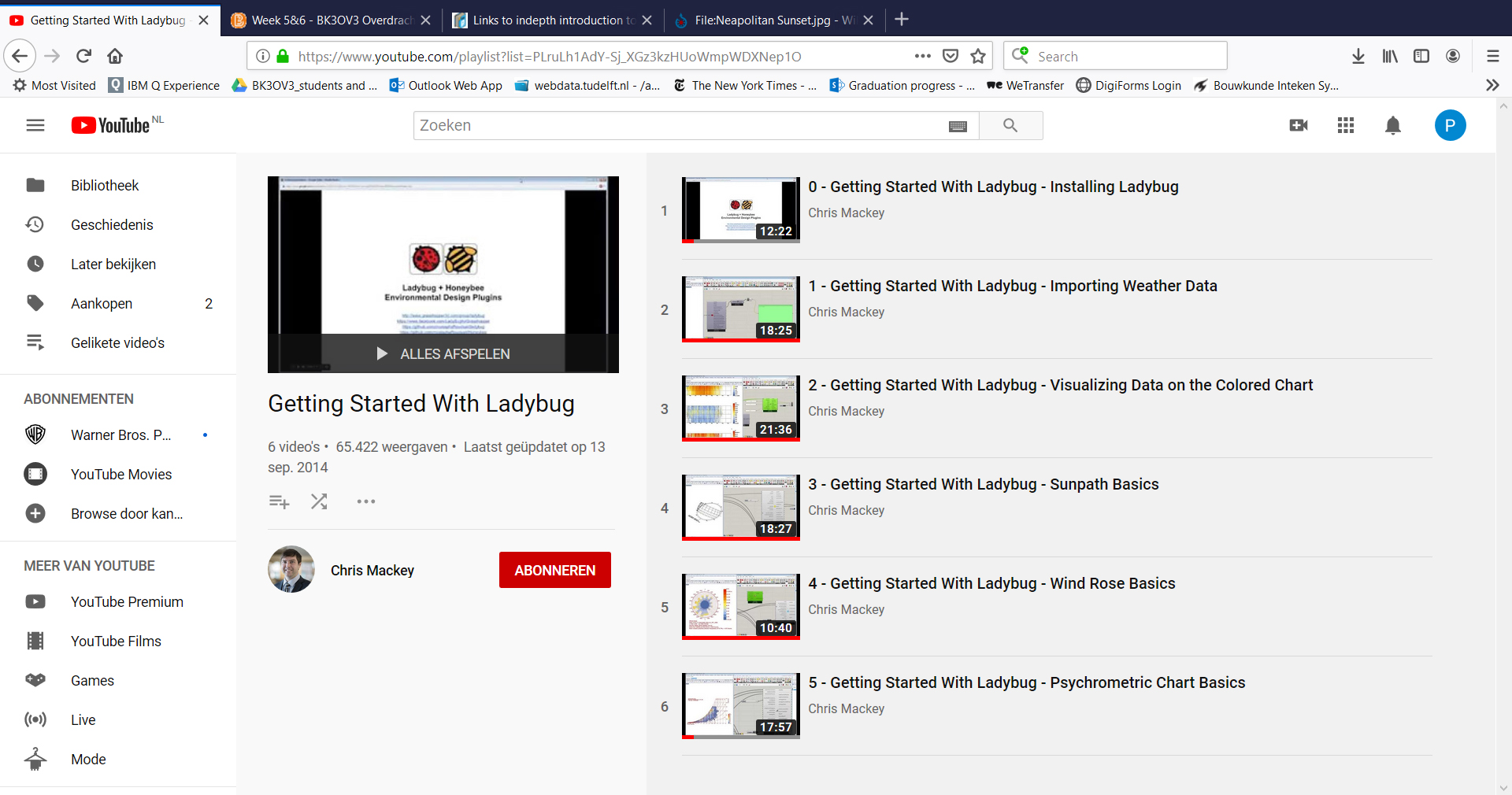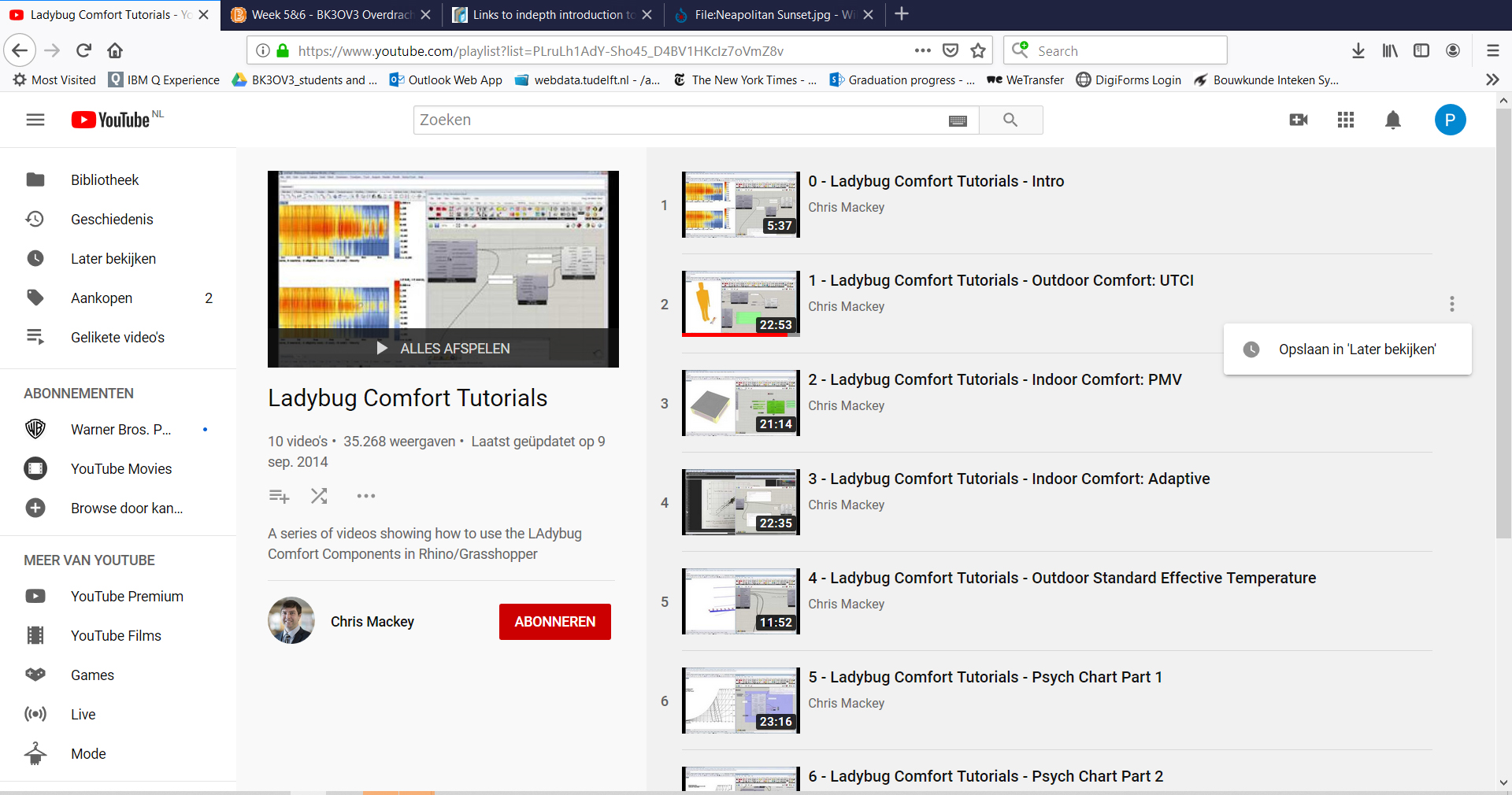Ladybug
-
Intro
-
Tutorials
-
Useful links and readings
Information
| Last updated | January 6, 2025 |
Responsible
| Faculty |
Ladybug 0/2
Ladybug
The most common climate analysis plugin for Grasshopper
What is Ladybug?

Ladybug is a Grasshopper plug-in that provides imports EnergyPlus Weather Files into Grasshopper and allows for the implementations of simulations and analyses. It is also possible to use Ladybug to visualize weather data through 2D and 3D climate graphics which can be used to support decision making in the early design stages. Some of the analysis tools that Ladybug includes are solar radiation, view, and sunlight-hours analysis among others.
Ladybug is part of the Ladybug Tools collection, so install the whole Ladybug Tools package to see it in your Grasshopper panels. For more details regarding the installation process see the tutorial:
Panel Overview
The ladybug tools are found on the “Ladybug” panel.

Ladybug(LB)
- 0 :: Import – import weather data into Grasshopper
- 1 :: Analyze Data – analyze weather data
- 2 :: Visualize Data – visualize weather data
- 3 :: Analyze Geometry – analyze geometry for lighting, solar, and wind
- 4 :: Extra – settings and additional tools for various analysis tools
- 5 :: Version – version information, updater, and select legacy components
Ladybug 1/2
Tutorialslink copied
Ladybug 2/2
Useful links and readingslink copied
Learn & Examples
Indepth Videos

Indepth Introduction
Chris Mackey who created the plugin Ladybug made a series of video’s explaining on how to use the features of LadyBug. It is recomended to take a look at these because to give an excellent insight of the wealth of information related to the waether you can generate in support of your design decisions.

Indepth Comfort
Especially the Outdoor Comfort : UTCI can be very useful if you want to investigate how comfortable it will be to be outside at certain times. This goes beyond a simple air temperature value, but defines how it feels to a human to be outside, where humidity and wind for example will have an influence on this value.
Primer & Forums
Write your feedback.
Write your feedback on "Ladybug"".
If you're providing a specific feedback to a part of the chapter, mention which part (text, image, or video) that you have specific feedback for."Thank your for your feedback.
Your feedback has been submitted successfully and is now awaiting review. We appreciate your input and will ensure it aligns with our guidelines before it’s published.
